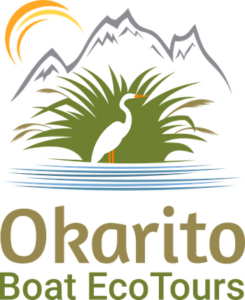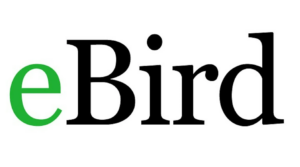Native Species
Native Species
There’s plenty of unique native species to protect in South Westland. By eliminating predators, we hope not only to allow resident populations to thrive, but also to create a haven where over time, vulnerable species from around the country can be reintroduced and regenerate.
If you’re keen to set eyes on native birds, book a tour with one of the region’s excellent nature-tourism operators:
The New Zealand Bird Atlas, or eBird, is a great resource both for recording bird sightings and for scoping out potential viewing spots. Several of our rangers are dedicated eBird contributors, as it can be a useful tool for observing encounters and trends over time. We highly encourage you to record your sightings in Predator Free South Westland: https://ebird.org/explore
Kākāriki
New Zealand Parakeet
(yellow crowned)
- New Zealand status: Endemic
- Home turf: Once extremely common throughout New Zealand, kākāriki are today rare or uncommon in most places outside of predator-free sanctuaries
- Diet: Berries, seeds, fruit and insects
- Song: A loud rapid chatter that sounds like ‘ki-ki-ki-ki’
- Conservation status: Declining
- Biggest threats: Introduced predators, particularly for females and chicks while they are nesting and roosting in holes that lack an escape route
- Over the last few years, kākāriki sightings in Predator Free South Westland have become increasingly common – an amazing turnaround considering many locals cannot remember a single sighting in the years prior. They can now be regularly spotted foraging on the forest floor, rather than staying in the canopy out of reach of predators.
- Where to spot them:
Kakaruai
South Island Robin
- Claim to fame: Friendly and inquisitive, not afraid to get up-close-and-personal
- New Zealand status: Endemic
- Home turf: Forests throughout the South Island and Rakiura
- Diet: Invertebrates including earthworms, cicadas, stick insects, tree wētā and slugs
- Song: A series of very loud ‘chuck’ calls, descending in tone, starting in rapid succession and finishing slowly
- Conservation status: Declining
- Biggest threats: Introduced predators – eggs, nestlings and adult females are frequently taken during the breeding season by rats, possums and stoats, resulting in male biased populations
- The average lifespan for these birds is expected to be 4 to 5 years, although they may survive up to 17 years where intensive predator control is undertaken. They’ll often stay within the same territory for their entire life.
- Where to spot them:
Kārearea
New Zealand Falcon
- Claim to fame: Can fly at speeds up to 200 km/h
- New Zealand status: Endemic
- Home turf: Most of New Zealand south of Waikato, some offshore islands including Auckland Islands
- Diet: A range of animals, including insects, mammals and lizards, but consists mainly of birds
- Song: A loud ‘kek kek kek’ is commonly uttered in defence of a territory
- Conservation status: Threatened – Nationally Endangered
- Biggest threats: Introduced predators, habitat loss, disturbance, development impacts, human persecution, electrocution, though these threats are not well understood
- Because they lay their eggs in simple scrapes, they can nest in a variety of locations, from large trees to on the ground under small rocky outcrops. Where they nest on the ground, they are well known for attacking intruders, including humans, with aggressive dive-bombing strikes to the head. Predator Free South Westland is home to the Eastern form of this bird.
- Where to spot them:
Kea
- Claim to fame: Innately curious and intelligent, prone to destruction
- New Zealand status: Endemic
- Home turf: Alpine and forested environments of the South Island
- Diet: Omnivorous scavengers, taking in fruits, leaves, seeds, larvae, grubs, insects, smaller birds and the carcasses of larger animals like deer and sheep
- Song: A long, loud, high-pitched descending cry which may be broken “kee-ee-aa-aa”, or unbroken “keeeeeaaaa”
- Conservation status: Nationally Endangered
- Biggest threats: Predation, especially by stoats, human impacts including lead poisoning, deliberate killing, and accidents with man-made items such as cars
- This native parrot is a taonga for Ngāi Tahu and Ngā iwi o Te Tauihu (northern South Island iwi) and valued by New Zealanders as an icon of the outdoors. Kea mainly nest within native forest, but socialise and play on prominent rocky outcrops and windy saddles, developing hierarchies within flocks. Our rangers have encountered gangs of juveniles in groups of up to 30, an event we witness regularly via our detection network too.
- Kea are particularly vulnerable to predators because they nest in cavities on the ground that are easy to find and get into. Monitoring shows that when predators are controlled with well-timed aerial 1080 treatment and/or traps, about 70% of kea nests are successful, producing at least one chick. Without pest control, this success rate is about 40% but drops to 10% or less after a forest mast (seeding) causes rat and stoat numbers to soar.
- Where to spot them: Alex Knob walking track https://www.doc.govt.nz/parks-and-recreation/places-to-go/west-coast/places/westland-tai-poutini-national-park/things-to-do/tracks/alex-knob-track/
- While predator control benefits overall kea populations, individual birds can be at risk during predator elimination operations. Read about ZIP’s research and risk mitigations for kea: https://zip.org.nz/helpingkeathrive
- Record kea sightings on the Kea Database: https://keadatabase.nz/birds
- Learn more about efforts to protect kea from the Kea Conservation Trust: https://www.keaconservation.co.nz/
Kererū
New Zealand Pigeon
- Claim to fame: The only remaining bird species big enough to swallow large fruit, such as those of karaka, miro, tawa and taraire, and disperse the seed over long distances – making them crucial for forest regeneration
- New Zealand status: Endemic
- Home turf: Widespread across Aotearoa’s forested areas
- Diet: Buds, leaves, flowers and fruit – big fans of a juicy berry
- Song: Generally silent except for occasional ‘oos’ – however, their distinctive heavy wing beats sound a bit like a helicopter
- Conservation status: Not threatened
- Biggest threats: Introduced predators, particularly feral cats, possums, stoats and ship rats, especially when nesting
- While some individuals can spend weeks or months living within an area of a few hectares, such periods can be interspersed with long-distance flights to reach seasonal food sources. For example, one satellite-tagged Southland pigeon travelled at least 480 km during a 100-day period, involving four crossings of Foveaux Strait.
- Where to spot them:
Kōtuku
White Heron
- Claim to fame: It’s the bird on our $2 coin
- New Zealand status: Native
- Home turf: Though widespread in Asia and Australia, the rare sightings in Aotearoa occur most often in harbours and estuaries or freshwater wetlands including high country lakes
- Diet:
- Song: Male gives harsh croak, female has soft ‘who-who’ call, chicks ‘click-click’
- Conservation status: Threatened – Nationally Critical
- Biggest threats: Natural variables, such as storms and the condition of Ōkārito Lagoon are significant factors in determining breeding success, alongside the threat of introduced predators
- The kōtuku’s sole Aotearoa breeding site near Ōkārito Lagoon in Westland is well-known and well-protected. About 50 pairs of white herons breed here, mainly in the crowns of tree ferns overhanging the river, between September and February each year.
- Elsewhere it is ‘He kotuku rerenga tahi’ or the bird of single flight, implying something seen perhaps once in a lifetime. As a symbol of things both beautiful and rare, the kōtuku occupied an important place in Māori myth and folklore, and to compare a visitor to a kōtuku was a compliment of the highest order.
- Where to spot them: Ōkārito Lagoon
- Visit the sanctuary with White Heron Sanctuary Tours: https://www.whiteherontours.co.nz/
Mātātā
Fernbird
- Claim to fame:
- New Zealand status: Endemic
- Home turf: Widely if patchily distributed in dense wetland vegetation throughout Aotearoa
- Diet: Insects (especially caterpillars, flies, beetles and moths), spiders and other small invertebrates
- Song: A characteristic ‘u-tick’ given as a duet by members of a pair
- Conservation status: At Risk – Declining
- Biggest threats: Loss of wetlands, introduced predators
- Quick summary of population in the region?
Matuku-hūrepo
Australasian Bittern
- Claim to fame: Extremely cryptic and rarely seen
- New Zealand status: Native
- Home turf: Wetlands throughout Aotearoa, Australia and New Caledonia
- Diet: Fish, eels, spiders, insects, molluscs, worms, freshwater crayfish, frogs and lizards
- Song: a sequence of distinctive ‘wooom’ calls known as ‘booms’
- Conservation status: Threatened – Nationally Critical
- Biggest threats: Loss of wetlands, introduced predators
- Matuku-hūrepo are important to Māori. They appear in language as part of legends, stories, early pictures and metaphor and there are numerous place names referring to them. They were important for food and their feathers were used for ceremonial decoration. Our detection network allows us to observe bittern while they are really seen otherwise.
Ngirungiru
Tomtit
- New Zealand status: Endemic
- Home turf: Widespread across forests of Aotearoa
- Diet: Small invertebrates, including spiders, amphipods, beetles, flies, moths, wētā
- Song: A short “seet”, “zet” or “swee”, most often given singularly, but up to five in quick succession
- Conservation status: Not Threatened
- Biggest threats: Introduced predators
- Ngirungiru are known to follow trampers, taking the opportunity to forage the organisms kicked up by their boots
Pīwakawaka
Fantail
- Lorem ipsum dolor sit amet, consectetur adipiscing elit, sed do eiusmod tempor incididunt ut labore et dolore magna aliqua. Ut enim ad minim veniam, quis nostrud exercitation ullamco laboris nisi ut aliquip ex ea commodo consequat. Duis aute irure dolor in reprehenderit in voluptate velit esse cillum dolore eu fugiat nulla pariatur. Excepteur sint occaecat cupidatat non proident, sunt in culpa qui officia deserunt mollit anim id est laborum.
Pīwauwau / Tuke
Rock Wren
- Claim to fame: Our only true alpine bird
- New Zealand status: Endemic
- Home turf: Widely but patchily distributed through alpine and sub-alpine areas of the South Island
- Diet: Insects (especially moths, moth larvae, flies, beetles, scale insects) and spiders
- Song: A high pitched three note call and a ‘whirring’ call
- Conservation status: Threatened – Nationally Endangered
- Biggest threats: Stoats
- Rock wrens are poor fliers. They nest on the ground and are easy targets for introduced predators. In areas where there is predator control, around 85% of nests are successful in fledging young. In areas where there is no predator control, nesting success is 0 – 30% and populations are at risk of extinction. Climate change is anticipated to affect rock wrens in the future. As the temperature warms, their alpine environment becomes more suitable for potential predators, such as rats.
Pūteketeke
Australasian Crested Grebe
- Claim to fame: Bird of the Century 2023
- New Zealand status: Native
- Home turf: Across the alpine and sub-alpine lakes of the South Island, though they have declined significantly on the West Coast
- Diet: Fish, Aquatic invertebrates
- Song: A range of loud growling, grunting and barking calls
- Conservation status: Threatened – Nationally Vulnerable
- Biggest threats: Introduced predators, loss of wetlands
Pohowera
Banded Dotterel
- Claim to fame:
- New Zealand status: Endemic
- Home turf: Lightly vegetated riverbeds, outwash fans, herbfields, beaches and farmland across Aotearoa
- Diet: Crustaceans, worms, flies, spiders, beetles, insect larvae, mayflies, stoneflies, caddisflies
- Song: When territorial, a “chee-aree-aree” call, with males often puffing out the breast feathers at the same time.
- Conservation status: Declining
- Biggest threats: Introduced predators, habitat loss, disturbance, tide and storm surges
- Dotterels can live up to 25 years, although currently their expected life span is closer to five due to predation and environmental disturbance.
- Where to spot them:
Rowi / Kiwi
- Claim to fame: Aotearoa’s rarest kiwi
- New Zealand status: Endemic
- Home turf: Ōkārito forest and surrounds in South Westland, predator-free islands of Marlborough Sounds
- Diet: Small invertebrates, earthworms, larvae of beetles, cicadas and moths, centipedes, spiders, crickets, wētā, freshwater crayfish, fallen fruit, leaves
- Song: A high-pitched ascending whistle repeated 15-25 times
- Conservation status: Nationally Endangered
- Biggest threats: Introduced predators, particularly stoats
- South Westland is home to the only remaining natural population. The area is now a sanctuary and the population are cared for by a dedicated DOC team. To maintain the current population, chick survival must be at least 13% each breeding season. To grow the population by 2%, chick survival must be 26%. We’ve worked closely with DOC to target stoats in the area to protect rowi during breeding seasons. In 2024, chick survival was 58% – a vast improvement after decades of averaging around 20%.
- Read about work to protect rowi: https://www.doc.govt.nz/nature/native-animals/birds/birds-a-z/kiwi/rowi/
- Visit the West Coast Wildlife Center, a joint effort from Te Rūnunga o Makaawhio and DOC: https://wildkiwi.co.nz/
- See a kiwi in the wild: https://okaritokiwitours.co.nz/
Tūī
- Lorem ipsum dolor sit amet, consectetur adipiscing elit, sed do eiusmod tempor incididunt ut labore et dolore magna aliqua. Ut enim ad minim veniam, quis nostrud exercitation ullamco laboris nisi ut aliquip ex ea commodo consequat. Duis aute irure dolor in reprehenderit in voluptate velit esse cillum dolore eu fugiat nulla pariatur. Excepteur sint occaecat cupidatat non proident, sunt in culpa qui officia deserunt mollit anim id est laborum.
Whio
Blue Duck
- Claim to fame: The duck from Aotearoa’s $10 note
- New Zealand status: Endemic
- Home turf: Clean, fast-flowing rivers in the North and South Islands
- Diet: Freshwater invertebrates, larvae
- Song: A high-pitched wheezy disyllabic whistle, “whi-o”, from which the Maori name ‘whio’ is derived
- Conservation status: Threatened – Nationally Vulnerable
- Biggest threats: Introduced predators (particularly stoats), habitat loss, disturbance
- Whio are believed to be an ancient species of waterfowl, appearing at a very early stage in evolutionary history. Their isolation in New Zealand has resulted in unique anatomical and behavioural features. They are river specialists, and one of the few waterfowl worldwide that live year-round on fast-flowing rivers. Ko whio whio are found nowhere else in the world and are rarer than some species of kiwi.









